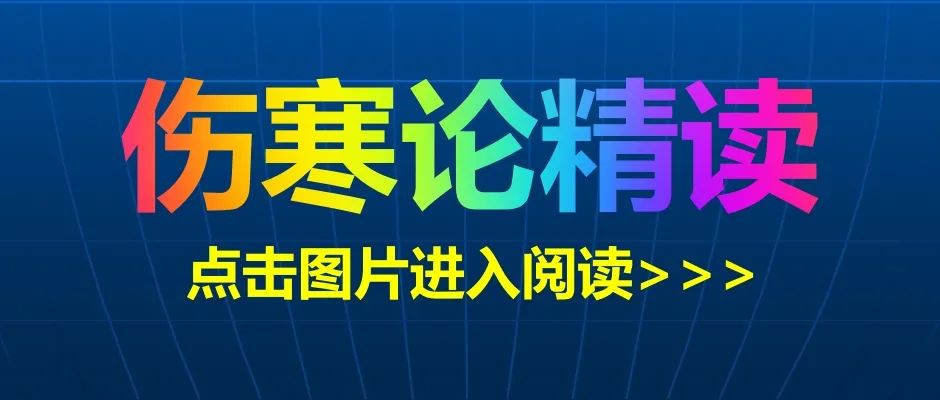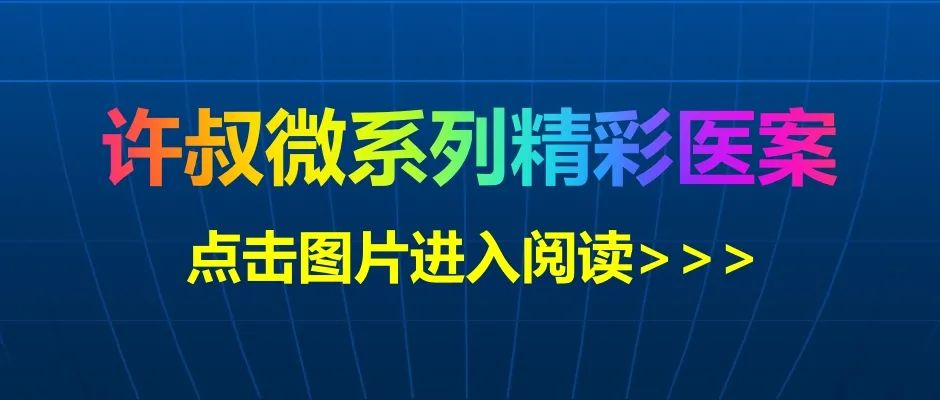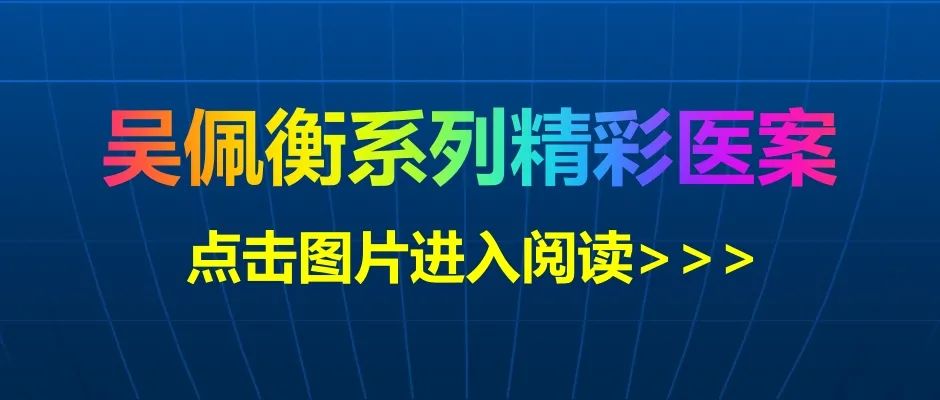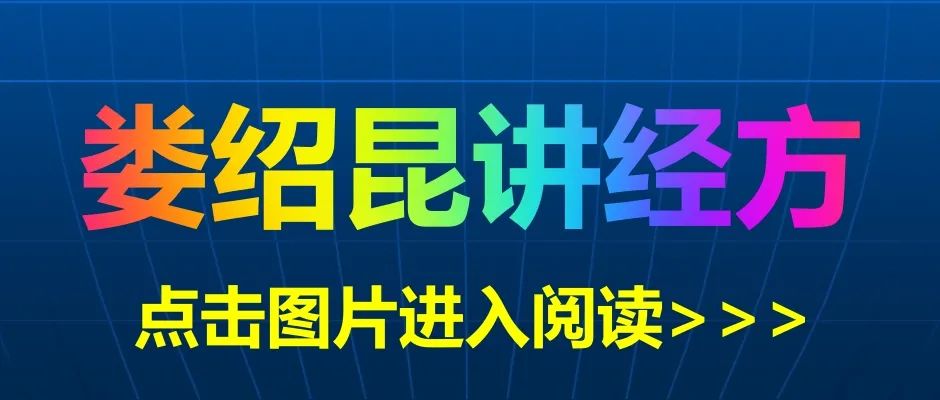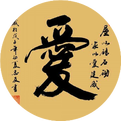Treatment of Upper Jiao Damp-Heat Syndrome
Continuation from last issue: Overview of Damp-Heat Diseases
1. Characteristics of the Syndrome
The Upper Jiao Damp-Heat syndrome represents the initial stage of damp-heat disease. The path of pathogenic invasion is primarily through the mouth and nose. It may occur due to the combination of damp and heat evils invading the body; or from the invasion of damp evil, which obstructs the flow of Qi, leading to the transformation of excess Yang into heat, gradually resulting in damp-heat syndrome. Overall, damp evil is predominant. Damp-heat evil in the Upper Jiao primarily invades the lungs, causing dysfunction in the lung’s ability to diffuse and descend, leading to disturbances in the defensive function and water metabolism. Clinical manifestations include: chills and fever, body heat without elevation, heaviness and pain in the head and body, and a slippery pulse. If damp evil spreads and obstructs the spleen and stomach, symptoms such as fullness in the epigastrium and lack of appetite may also be present.
In addition to lung pathology, the Upper Jiao Damp-Heat syndrome can also lead to the accumulation of phlegm turbidity due to damp-heat stagnation, which can obscure the heart’s pericardium. Clinical manifestations include: dull expression, mental confusion, alternating states of consciousness, etc.
2. Treatment Principles
For damp-heat evil in the Upper Jiao lung, treatment should focus on aromatic and pungent herbs to disperse and transform damp turbidity. The lungs are the highest organ, responsible for diffusion and descent, and they connect with the skin and hair. Therefore, it is necessary to guide treatment according to the situation, selecting warm and aromatic herbs that can lightly lift and disperse, promote lung Qi, and transform damp turbidity, allowing the pores to open slightly, facilitating sweating to expel damp evil. As Wu Jutong said: “Treat the Upper Jiao as if it were a feather; it must be lifted lightly.” (“Differentiation of Warm Diseases”)
For the syndrome of phlegm turbidity obscuring the heart’s pericardium due to damp-heat stagnation, treatment should focus on transforming dampness, clearing heat, and opening the orifices; once phlegm-damp is expelled, heat will not remain.
3. Differentiation and Treatment1. Damp Evil Obstructing the Exterior
Clinical ManifestationsChills and fever, little sweating, heaviness and pain in the head, body heaviness and pain, pale tongue with a greasy coating, and a slippery pulse.
Pathogenesis AnalysisThis syndrome is caused by the external invasion of damp evil, obstructing the muscle layer. Dampness is a Yin evil, heavy and turbid; when dampness obstructs the muscle layer, lung Qi fails to diffuse, and defensive Yang is constrained, leading to chills and little sweating. When damp evil invades, the righteous Qi resists the evil, resulting in fever. The sticky nature of dampness can obstruct the clear orifices, causing heaviness and pain in the head, and even confusion. Dampness obstructs the muscle layer, leading to body heaviness and pain. This syndrome is caused by external damp evil, which does not injure fluids, hence the pale tongue and lack of thirst, differing from external heat evil, which injures fluids and causes thirst. When dampness spreads and obstructs Qi, it can lead to chest fullness and discomfort. Dampness obstructs the spleen and stomach, disrupting their ascending and descending functions, causing stomach Qi to rebel, leading to nausea and lack of appetite. Damp turbidity descending to the large intestine can cause borborygmus and diarrhea. A pale greasy tongue coating and a slippery pulse are signs of excess dampness.
Treatment MethodDisperse exterior dampness and simultaneously eliminate internal dampness.
FormulaHuo Xiang Zheng Qi San (“Formulas from the Taiping Huimin Heji Bureau”)
Da Fu Pi Bai Zhi, Zi Su, Fu Ling (peeled) each 1 liang; Ban Xia Qu Bai Zhu, Chen Pi (peeled) Hou Po (remove coarse skin, ginger juice roasted) Ku Geng each 2 liang; Huo Xiang (remove soil) 3 liang; Gan Cao (roasted)2 liang and 5 qian
The above (first) is finely powdered. Each dose is 2 qian. Boil with 1 cup of water, add 3 slices of ginger and 1 jujube, and simmer until reduced to 7 parts. Take hot. If sweating is desired, cover with clothing and take again after boiling. (In modern times, it is often taken as a decoction or pill.)
Formula DiscussionThe formula containsHuo Xiang which is warm and aromatic, capable of dispersing exterior dampness and transforming dampness, making it the monarch herb of the formula.Bai Zhi, Zi Su are also warm and aromatic, assistingHuo Xiang in promoting lung Qi and dispersing exterior dampness.Ban Xia Qu, Chen Pi are warm,Da Fu Pi, Hou Po are bitter and warm; these four herbs work together to open and dry dampness, move Qi, and promote the flow of Qi, making it easier to expel dampness.Ban Xia Qu also has the function of awakening the stomach and eliminating damp stagnation.Fu Ling, Bai Zhu, roasted Gan Cao, fresh ginger, and jujube strengthen the spleen, benefit Qi, and harmonize the stomach to promote the transformation of water and dampness.Fu Ling, Bai Zhu also have the function of benefiting and drying dampness.Jie Geng carries the herbs upward to expel the evil from the Upper Jiao and open lung Qi to facilitate the water pathways. The combination of these herbs, withHuo Xiang, Bai Zhi, and Zi Su being warm and aromatic, disperses exterior dampness in the Upper Jiao, while also including warm, bitter, and light draining herbs to eliminate internal dampness, thus treating both the exterior and interior.
This syndrome shares symptoms of chills and fever, with heavy body and head pain with the Taiyang cold damage syndrome, but the etiology and pathogenesis differ. Taiyang cold damage is due to cold evil binding the exterior, hence in addition to heavy chills and light fever, headache and body pain, there are also thin white tongue coating and floating tight pulse, but without the sensation of heaviness in the head and body. Treatment should useMa Huang, Gui Zhi which are very pungent and warm to induce sweating and disperse cold. This syndrome is due to damp evil obstructing the exterior; in addition to chills and fever, headache and body pain, there is also a sensation of heaviness in the head and body, and may also present with a pale greasy tongue coating, slippery pulse, chest fullness, nausea, and lack of appetite. Treatment should focus on warm and aromatic herbs to disperse exterior dampness, and also include drying and draining dampness herbs to eliminate internal dampness.
2. Cold Damp Obstructing the Exterior, Summer Heat Accumulated Internally
Clinical ManifestationsChills and fever, no sweating, heaviness and pain in the head and body, chest fullness and discomfort, irritability and thirst, short and red urination, thin greasy white tongue coating, and a slippery rapid pulse.
Pathogenesis AnalysisThis syndrome is often caused by excessive cooling during the summer. In hot summer, many people are prone to the invasion of summer heat. When summer heat is internally abundant, they often prefer to rest in cool places or return home late at night, making them susceptible to cold damp evil. The combination of internal summer heat and external cold damp leads to this syndrome. Cold damp obstructs the pores, causing defensive Yang to be constrained, hence chills without sweating. Cold damp obstructs, causing Qi and blood to be blocked, leading to heaviness and pain in the head and body. The struggle between righteous Qi and evil leads to fever. Dampness spreads internally, obstructing Qi, leading to chest fullness and discomfort. Internal summer heat consumes fluids, causing thirst and short red urination. Summer heat disturbs the heart, leading to irritability. The thin greasy white tongue coating indicates the presence of damp turbidity, as damp evil is still on the exterior and has not combined with internal heat, hence although there is internal heat, the tongue is not yellow. The slippery pulse indicates dampness, while the rapid pulse indicates internal heat.
Treatment MethodDisperse the exterior and clear summer heat.
FormulaXin Jia Xiang Ru Yin (“Differentiation of Warm Diseases”)
Xiang Ru2 qian; Yin Hua3 qian; Fresh Bian Dou Hua3 qian; Hou Po2 qian; Lian Qiao2 qian
Use 5 cups of water, boil down to 2 cups, take one cup first; if sweating occurs, stop taking; if no sweating, take again until finished.
Formula DiscussionThe formula containsXiang Ru which is warm and aromatic, inducing sweating and dispersing exterior cold damp.Yin Hua, Lian Qiao, and Bian Dou Hua are light and clear, promoting the release of internal summer heat.Hou Po regulates Qi and dries dampness. The combination of these herbs disperses exterior cold damp and clears internal summer heat, thus treating both the exterior and interior. If internal heat is severe, Huang Lian can be added to the formula.
This syndrome shares symptoms of chills and fever, heavy head and body pain with the Huo Xiang Zheng Qi San syndrome. However, the Huo Xiang Zheng Qi San syndrome is due to damp evil obstructing the exterior and also includes internal dampness, with symptoms of no thirst, chest fullness, nausea, borborygmus, and diarrhea, hence all herbs in the formula are for expelling dampness. This syndrome has exterior cold damp and internal summer heat, with symptoms of irritability, thirst, and yellow urination, hence treatment uses Xin Jia Xiang Ru Yin to both disperse the exterior and eliminate cold damp, and to clear internal heat. The pathogenesis of the two syndromes differs, and so do the treatment methods.
Literature Excerpt“Hand Taiyin summer heat, as in the above syndrome, but without sweating, is treated with Xin Jia Xiang Ru Yin.” (“Differentiation of Warm Diseases, Upper Jiao Section, Article 24”)
Notes“Hand Taiyin summer heat, as in the above syndrome” refers to the second article of this section: “Similar to cold damage, but the right pulse is large and rapid, while the left pulse is smaller than the right, with severe thirst, flushed face, and profuse sweating, known as summer heat, in Hand Taiyin, treated with Bai Hu Tang.” This indicates that the syndrome is due to internal summer heat. “But without sweating” indicates that although there is internal summer heat, the exterior is obstructed, causing summer heat to accumulate internally and not be released. The phrase “sweating does not occur” is an abbreviation. To determine what evil is obstructing the exterior, one must consider the preceding and following descriptions and analyze the formula comprehensively. Regarding the phrase “similar to cold damage,” Wu’s commentary states: “referring to headache, body pain, fever, and chills,” thus this syndrome should present with: chills and fever, no sweating, headache and body pain, thirst, and flushed face. The treatment uses Xiang Ru, which is a warm and aromatic herb to disperse the exterior and transform dampness, indicating that the syndrome is due to cold damp obstructing the exterior, while summer heat is accumulated internally.
3. Damp-Heat Stagnation, Concurrent Interior and Exterior Disease
Clinical ManifestationsFever and chills, body heat without elevation, increased heat in the afternoon, pale yellow complexion, heavy headache, body heaviness, cold limbs, fatigue, dull expression, chest fullness and discomfort, lack of appetite, and possibly nausea, dry mouth with no desire to drink, loose stools, and yellow scanty urination, pale greasy tongue coating, and a slippery pulse.
Pathogenesis AnalysisThis syndrome represents the initial stage of damp-heat disease, where damp-heat evil invades the Upper Jiao, diffusing up and down, obstructing both the exterior and interior. Fever and chills, heavy headache, and body heaviness are signs of damp-heat on the exterior. Due to the combination of damp and heat evils, dampness restrains heat, and heat accumulates within dampness, unable to diffuse, hence the body feels hot but the face does not turn red, instead appearing pale yellow. When the skin is touched, there is no burning sensation, but after prolonged contact, the heat gradually increases, leading to a burning sensation, which is termed “body heat without elevation.” This is a characteristic of fever in damp-heat disease, differing significantly from the fever in warm-heat diseases. In the afternoon, the Yangming channel is in charge, and since Yangming is abundant in Qi and blood, during its governing time, the righteous Qi is strong, and the struggle between righteous and evil leads to increased heat in the afternoon. Dampness obstructs the flow of Qi, preventing Yang Qi from reaching the extremities and the entire body, hence the coldness in the limbs and fatigue. Damp turbidity obscures the clear orifices, leading to a dull expression. Chest fullness and discomfort, lack of appetite, nausea, and loose stools are signs of internal dampness, obstructing the flow of Qi, and the spleen and stomach’s ascending and descending functions are disrupted. Dampness obstructs Qi, leading to poor transformation of fluids, resulting in dry mouth, yet due to internal dampness, there is no desire to drink. Internal damp-heat leads to scanty yellow urination. A pale greasy tongue coating and a slippery pulse indicate excess dampness.
Treatment MethodDisperse damp-heat.
Formula
Huo Po Xia Ling Tang (“Medical Origins”)
Huo Xiang2 qian; Ban Xia1 qian and 5 qian; Chi Ling3 qian; Xing Ren3 qian; Sheng Yi Ren4 qian; Kou Ren6 fen; Zhu Ling1 qian and 5 qian; Ze Xie1 qian and 5 qian; Dan Dou Chi3 qian; Hou Po1 qian
San Ren Tang (“Differentiation of Warm Diseases”)
Xing Ren5 qian; Fei Hua Shi6 qian; Bai Tong Cao2 qian; Bai Kou Ren2 qian; Zhu Ye2 qian; Hou Po2 qian; Sheng Yi Ren6 qian; Ban Xia5 qian
Use 8 bowls of water, boil down to 3 bowls, take one bowl each time, three times a day.
Formula DiscussionIn Huo Po Xia Ling Tang,Huo Xiang is warm and aromatic, dispersing the exterior and transforming dampness.Dou Chi disperses the exterior and relieves stagnation, assistingHuo Xiang in expelling the exterior evil.Xing Ren enters the Upper Jiao to descend lung Qi, facilitating the flow of water pathways.Sheng Yi Ren pairs with Fu Ling to strengthen the spleen and benefit dampness.Zhu Ling pairs with Ze Xie to clear and benefit damp-heat.Ban Xia descends and harmonizes the stomach to stop vomiting.Kou Ren awakens the stomach and eliminates stagnation.Ban Xia and Kou Ren paired with Hou Po, which is warm and bitter, opens and dries dampness, moving Qi. The combination of these herbs works together to disperse damp-heat, allowing the evil to be expelled from both the exterior and interior, thus treating both simultaneously.
San Ren Tang containsXing Ren which enters the Upper Jiao, descending lung Qi to facilitate the flow of water pathways, making it the monarch herb of the formula.Kou Ren is warm and aromatic, awakening the stomach and eliminating dampness.Sheng Yi Ren is sweet, slightly cold, strengthening the spleen, benefiting dampness, and clearing heat.San Ren works together to treat the dampness that diffuses through the Upper, Middle, and Lower Jiao. Paired withBan Xia and Hou Po, which are warm and bitter, they open and dry dampness, moving Qi. Hua Shi, Tong Cao, and Zhu Ye are light and clear, benefiting dampness and clearing heat. Zhu Ye also has the function of lightly clearing and dispersing, allowing heat to exit the exterior. The combination of these herbs works together to open the Upper, promote the Middle, and drain the Lower, achieving the function of dispersing damp-heat.
Huo Po Xia Ling Tang and San Ren Tang have similar principles in formulation, both containing herbs that open the Upper, promote the Middle, and drain the Lower, and are both used to disperse damp-heat evil invading the Upper Jiao, diffusing up and down, obstructing both the exterior and interior. However, Huo Po Xia Ling Tang usesHuo Xiang and Dou Chi, which have stronger dispersing power than San Ren Tang. Meanwhile, San Ren Tang usesHua Shi and Zhu Ye, which have stronger heat-clearing power than Huo Po Xia Ling Tang.
Literature Excerpt“Headache, chills, body heaviness and pain, pale tongue without thirst, thin and slippery pulse, pale yellow complexion, chest fullness without appetite, increased heat in the afternoon, resembling Yin deficiency, difficult to resolve, known as damp-heat. Sweating leads to confusion and deafness, severe cases lead to closed eyes and unwillingness to speak; purging leads to diarrhea, moistening leads to deep unresolved illness; the same method is used in late summer, deep autumn, and winter, San Ren Tang is the main treatment.” (“Differentiation of Warm Diseases, Upper Jiao Section, Article 43”)
NotesThis article discusses the main symptoms of damp-heat disease and its treatment contraindications. “Headache, chills, body heaviness and pain, pale tongue without thirst” symptoms are quite similar to Taiyang cold damage. However, the symptoms also show “slippery pulse, pale yellow complexion, chest fullness without appetite, increased heat in the afternoon,” which differ significantly from cold damage. Overall, the pulse and symptoms indicate that this syndrome is due to damp-heat. If misdiagnosed as Taiyang cold damage and treated with Ma Huang and Gui Zhi, which are very pungent and warm, to induce sweating, it will certainly exacerbate heat and move dampness, causing damp-heat to obscure the clear orifices and close the heart’s pericardium, leading to “confusion and deafness, severe cases lead to closed eyes and unwillingness to speak.” “Chest fullness without appetite” resembles food stagnation, but if misdiagnosed and treated with purgatives, it may damage spleen Yang, leading to “diarrhea.” Damp-heat disease “increased heat in the afternoon” resembles Yin deficiency heat, but the pathogenesis of the two differs, and the treatments are also different. If misdiagnosed as Yin deficiency and treated with nourishing and moistening herbs, it will exacerbate dampness, hence the phrase “moistening leads to deep unresolved illness.”
Damp-heat diseases often occur in the long summer rainy season, but they can also occur in autumn and winter. In treatment, there is no need to be restricted by the season; as long as damp-heat symptoms are present, they should be treated accordingly, as Wu said: “The same method is used in late summer, deep autumn, and winter.”
Case StudyDamp-Heat (Dampness heavier than heat)
Mr. Hua, male, 30 years old, Initial diagnosis on September 2, 1936
Body heat for 6-7 days, temperature 39°C, dizziness, heavy feeling in the head, pale complexion, fullness and discomfort in the chest, body aches and fatigue, slightly loose stools, short yellow urination, aching in the lower back, restless sleep. After treatment by a certain TCM practitioner, he first took Yin Qiao Jie Du Wan, then took decoctions, sweet and cold to clear heat, mainly using Sheng Di, Yuan Shen, Zhi Mu, Sha Shen. After taking the medicine, loose stools increased, body heat worsened, fatigue increased, pale tongue with a slippery coating, thick greasy root, both pulses were deep and slippery, weak upon palpation, resembling a slow response, short and scanty urination, pale and tasteless mouth.This indicates a deficiency of Yang in the body, poor spleen and stomach function, and external invasion of summer damp evil, lingering and not dispersing. Misuse of sweet and cold herbs increased dampness, obstructing Qi, leading to dysfunction in the three Jiao. Dampness heavier than heat, hence the pale complexion, lack of luster in the lips and mouth, and the pulse indicates cold damp obstructing Yang. I proposed to use aromatic herbs to disperse and regulate Qi to promote Yang in the chest. Once dampness transforms into Yang, Qi flows smoothly, and the three Jiao will be unblocked, leading to gradual recovery. Avoid sweet, sticky, and coarse foods.
Damp Dou Chi 12g, Stir-fried Mountain Zhi 3g, Huo Xiang Ye 10g (added later), Chen Xiang 1.5g (added later), Stir-fried Cang Zhu 4.5g, Hou Po 4.5g, Bai Kou Ren 3g, Xing Ren Mi 10g, Chuan Lian 2g, Ban Xia 10g, Chen Pi 4.5g, Fresh Ginger 3g, Winter Melon Skin 20g,
Two doses
Second diagnosis on September 5, 1936
After taking the medicine, body heat gradually subsided, temperature 38.5°C, dizziness and heaviness gradually relieved, chest fullness gradually lightened, slight sweating on the forehead, loose stools still present, short and red urination, lower back pain, body aches and fatigue, pale tongue with a slippery coating, thick root, both pulses were wiry and slippery, weak upon palpation, resembling a slow response.This indicates that summer heat and damp evil are mutually obstructing and not transforming, and excessive use of sweet and cold herbs has restrained spleen Yang, leading to dysfunction in the three Jiao and obstructed Qi flow. Again, I proposed to use aromatic herbs to disperse and regulate Qi to promote Yang and eliminate dampness.
Damp Dou Chi 12g, Stir-fried Mountain Zhi 3g, Huo Xiang Ye 10g (added later), Xiang Bai Zhi 6g (added later), Bai Kou Ren 4.5g, Xing Ren 10g, Ban Xia 12g, Hou Po 6g, Stir-fried Yi Mi 12g, Stir-fried Cang Zhu 4.5g, Chuan Lian 2g, Stir-fried Ginger 3g, Fu Ling Pi 12g,
Two doses
Third diagnosis on September 8, 1936
After taking aromatic herbs to transform and promote Yang and eliminate dampness, he felt moist all over, down to the legs, chest fullness significantly reduced, Qi flow also improved, heavy feeling in the head gradually relieved, urination was smooth and dark, temperature 37.8°C, stools gradually formed today, lower back pain, body aches and fatigue, pale tongue with a greasy coating, slightly thick, pulse has changed to slippery and smooth, showing improvement.Summer dampness and heat are mutually obstructing and not transforming; continuous use of aromatic herbs to disperse dampness has gradually reduced dampness and heat, and I will continue to promote the Upper and Middle Jiao, hoping for a favorable outcome in three weeks.
Bai Ji Li 10g, Xiang Dou Chi 12g, Tender Qian Hu 3g, Xiang Qing Hao 4.5g, Prepared Hou Po 4.5g, Stir-fried Cang Zhu 6g, Stir-fried Yi Mi 10g, Prepared Ban Xia 10g, Bai Kou Ren 3g, Stir-fried Ginger 2g, Xing Ren Mi 10g, Bai Mi 30g, stir-fried until charred, boiled in soup instead of water.
Two doses
Fourth diagnosis on September 11, 1936
Body heat has completely subsided, temperature 36.6°C, slight headache remains, stools are smooth, cough with much phlegm, pale mouth with no taste, pale tongue with a greasy coating, both pulses are harmonious and have spirit.Damp-heat has resolved after three weeks, feeling moist all over, but appetite is still poor, and there is still a feeling of fullness in the chest. I will continue to use pungent herbs to eliminate residual evil and harmonize the Yangming. Although the illness is improving, the righteous Qi has not yet recovered, and caution is needed regarding diet.
Bai Ji Li 10g, Xiang Qing Hao 4.5g, Powdered Dan Pi 4.5g, Flower of Hou Po 4.5g, Chuan Lian 2g, Chuan Bei Mu 10g, Xing Ren 10g, Xiang Sha Zhi Zhu Wan 15g (wrapped in cloth), Fan Zhi Qu12g (wrapped in cloth), Xiang Dao Ya 10g, Xin Hui Pi 3g, Bai Mi 30g, stir-fried until charred, boiled in soup instead of water.
Three doses
After three doses, all symptoms have resolved. One week after stopping the medication, both diet and bowel movements returned to normal, and he gradually recovered.
NotesDamp-heat stagnation must be treated by first addressing dampness. Otherwise, dampness will generate heat, and excessive heat will worsen the condition. At this time, it is especially forbidden to use nourishing Yin herbs. Wu Jutong in “Differentiation of Warm Diseases” said: “Moistening leads to deep unresolved illness,” clearly indicating that damp-heat disease contraindicates nourishing and greasy herbs. This syndrome is fundamentally due to the mutual obstruction of dampness and heat; at that time, if aromatic herbs are not used to resolve damp-heat stagnation, and sweet and cold herbs such as Sheng Di, Yuan Shen, Zhi Mu, Sha Shen are mistakenly used, it will indeed exacerbate dampness, leaving no path for heat to escape, hence the illness does not resolve and heat intensifies. Later, I changed to using aromatic herbs to disperse and transform, using Huo Xiang and Xiang Ru for their aromatic properties, Damp Dou Chi and Stir-fried Mountain Zhi for their dispersing properties, and Hou Po, Cang Zhu, and Ban Xia for their warming and bitter properties to eliminate dampness, and also used Xing Ren to open lung Qi to regulate the three Jiao, thus dampness gradually transformed, stagnation gradually resolved, and the three Jiao became unblocked, leading to gradual recovery.
I Copyright Statement
-
This article is excerpted from the “Complete Works of Zhao Shaoqin”
-
Author/Zhao Shaoqin. Compiled by Zhao Shaoqin Research Studio
-
Copyright belongs to the relevant rights holders. If there are any improper uses, please feel free to contact us.
-
If you like the works of the elder Zhao Shaoqin, please support the purchase of genuine books. The reprint aims to promote classical medicine.
I Submission Email [email protected]
“Warm Disease Overview” Series【Click the text to read directly】:
| Introduction to Warm Disease | Causes, Mechanisms, and Treatment of Warm Disease |
| Overview of Warm Diseases | Classification and Differentiation Guidelines of Warm Diseases |
| Warm Diseases – Exterior Syndrome Treatment | Formation and Development of Warm Disease Theory |
| Warm Diseases – Qi Syndrome Treatment (I) | Warm Diseases – Ying Syndrome Treatment (I) |
| Warm Diseases – Qi Syndrome Treatment (II) | Warm Diseases – Ying Syndrome Treatment (II) |
| Warm Diseases – Qi Syndrome Treatment (III) | Warm Diseases – Ying Syndrome Treatment (III) |
| Warm Diseases – Qi Syndrome Treatment (IV) | Warm Diseases – Blood Syndrome Treatment (I) |
| Warm Diseases – Qi Syndrome Treatment (V) | Warm Diseases – Blood Syndrome Treatment (II) |
| Warm Diseases – Qi Syndrome Treatment (VI) | Warm Diseases – Blood Syndrome Treatment (III) |
| Overview of Damp-Heat Diseases | Warm Diseases – Blood Syndrome Treatment (IV) |
